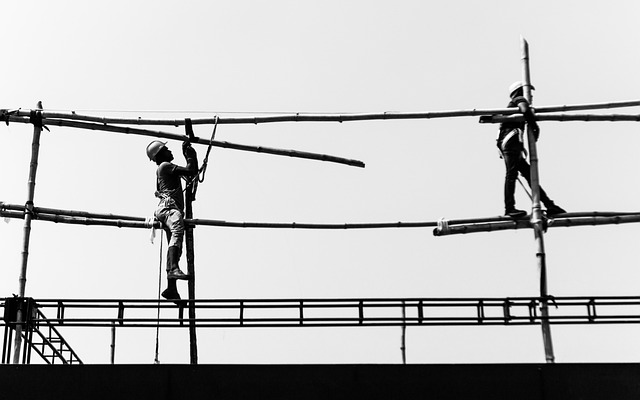Navigating the Risks: A Comprehensive Guide to Safety Hazards Across Different Business Types

Safety hazards in the business world are like hidden landmines; they can go off unexpectedly and wreak havoc on operations, employee well-being, and even reputation.
Businesses across various industries face unique safety challenges that require proactive measures to ensure a secure environment. In this guide, we will explore safety hazards across different business types, starting with the realm of logistics and fleet safety management, and then diving into a range of other industries.
Whether you’re a business owner, manager, or employee, these insights will help you navigate the complex landscape of safety risks and keep your workplace secure.
1. Logistics and Fleet Safety: Navigating the Road Ahead
The Roadmap to Safety:
In the realm of logistics and fleet management, the road itself poses one of the most prominent hazards. Maneuvering large vehicles in varying weather conditions and unfamiliar territories can be a treacherous journey. Here’s how to map out safety:
Route Planning and GPS Technology:
Ensure drivers have access to up-to-date GPS navigation systems that consider real-time traffic updates and road conditions. Planning routes that avoid congested areas and potential hazards can reduce the risk of accidents and improve efficiency.
Vehicle Maintenance:
Regular vehicle inspections and maintenance checks are the heartbeats of fleet safety. Worn-out tires, faulty brakes, or malfunctioning lights can all contribute to accidents. Create a routine maintenance schedule and document each inspection for reference.
Driver Training:
Drivers are the captains of your fleet. Providing them with comprehensive training on defensive driving, load securing, and emergency protocols can empower them to make safe decisions on the road.
Telematics Solutions:
Incorporate telematics systems that monitor driving behavior, such as speeding, harsh braking, and sudden lane changes. This data can be used to provide feedback and incentivize safer driving practices.
2. The Safety Mosaic Across Different Business Types
a.Hospitality Industry: A Welcoming, Safe Haven
In the world of hospitality, where customer satisfaction reigns supreme, ensuring the safety of both guests and staff is paramount. From hotels to restaurants, keeping these safety aspects in mind can create a welcoming haven:
Fire Safety Measures:
Fire safety measures are always of extreme importance across all types of businesses – not just hospitality – so make sure to install smoke detectors, fire extinguishers, and sprinkler systems. Conduct regular fire drills to educate staff about evacuation procedures and safe handling of fire-related equipment.
If you need help with your fire safety, then you may want to look into Commercial fire safety solutions in Hawaii (or elsewhere) to ensure that you are following protocols correctly and have all the necessary equipment.
Slip and Fall Prevention:
In busy kitchens or bustling hotel corridors, slippery floors can be a recipe for disaster. Use slip-resistant flooring and place caution signs in high-risk areas.
Food Safety Protocols:
Restaurants must adhere to stringent food safety standards to prevent foodborne illnesses. Regular hygiene training, proper food storage, and monitoring of expiration dates are essential.
b. Manufacturing Sector: Crafting a Secure Workspace
Factories and manufacturing units often house heavy machinery and intricate processes, making safety measures an integral part of the operation. Here’s how to weave safety into the manufacturing fabric:
Machine Guarding:
Install protective barriers and safety devices on machines to prevent employees from coming into direct contact with moving parts. Regular maintenance checks can ensure these safety features are intact.
Chemical Handling and Storage:
For industries dealing with chemicals, proper handling, storage, and disposal are crucial. Train employees to use personal protective equipment and follow proper protocols when working with hazardous substances.
Ergonomics and Repetitive Strain:
Repetitive tasks can lead to musculoskeletal disorders. Design workstations that promote ergonomic posture and provide regular breaks to prevent strain.
c. Retail Landscape: Navigating the Shopfront Safely
From corner shops to sprawling malls, retail spaces are where consumers and employees converge. Ensuring their safety while providing a pleasant shopping experience is key:
Crowd Management:
During sales or special events, large crowds can pose safety risks. Train staff in crowd management techniques and ensure emergency exits are clear and accessible.
Merchandise Placement:
Improperly stacked shelves or unsecured merchandise can fall and cause injuries. Implement proper shelving systems and regularly inspect merchandise displays.
Cash Handling Security:
Retail businesses dealing with cash transactions should invest in security measures like surveillance cameras, safes, and protocols for transporting money.
3. The Virtuous Cycle of Safety: Training, Feedback, and Improvement
No matter the industry, the cycle of safety never truly ends. It’s a continuous loop of training, gathering feedback, and implementing improvements. Here’s how you can ensure safety remains at the forefront:
Regular Training Sessions:
Conduct routine safety training sessions for employees at all levels. These sessions should cover protocols, emergency procedures, and any changes in safety regulations.
Encouraging Reporting:
Create an environment where employees feel comfortable reporting safety concerns without fear of retaliation. Anonymous reporting mechanisms can encourage candid feedback.
Post-Incident Analysis:
When accidents or near-misses occur, conduct thorough investigations to understand the root causes. Use this analysis to make informed decisions and prevent similar incidents in the future.
Embracing Technological Solutions:
Leverage technology to improve safety. Implement wearable devices that monitor vital signs and detect fatigue, or use sensors to track environmental hazards.
In the ever-evolving world of business, safety must remain a constant companion. By tailoring safety measures to the unique challenges of each industry, businesses can navigate risks, protect their workforce, and build a reputation for being a secure and responsible entity.
So, whether you’re steering a fleet down the open road or tending to customers in a bustling store, remember that safety isn’t just a rulebook—it’s a promise to those who trust your business to keep them secure.





